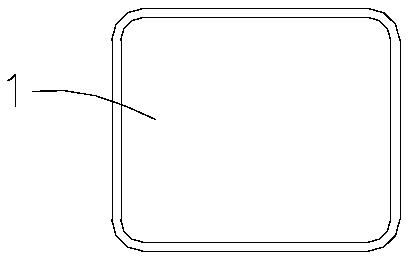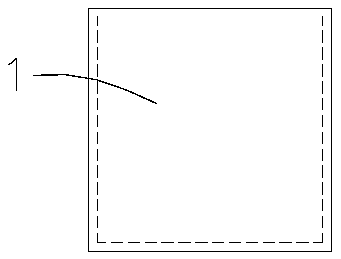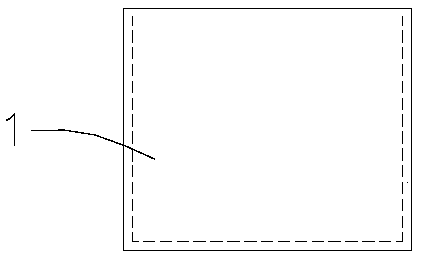Self-biased dual-light electrode system and application thereof
A self-bias, photo-anode technology, applied in the direction of illumination water/sewage treatment, water pollutants, water/sewage treatment, etc., can solve the problems of increased energy consumption, low utilization rate, low cathode electron selectivity, etc. , to achieve the effect of good porosity and large specific surface area
- Summary
- Abstract
- Description
- Claims
- Application Information
AI Technical Summary
Problems solved by technology
Method used
Image
Examples
preparation example Construction
[0063] A method for preparing a self-biased double photoelectrode system photocatalytic electrode, comprising the steps of:
[0064] (1) 2.68g Zn(NO 3 ) 2 .6H 2 O powder and 0.68g glycolic acid powder were dissolved in 15mL ethanol solution, stirred for 20min, and 20mL of the above solution was selected and inserted into the FTO electrode and heated at 160°C for 16h to obtain the N-Zn-MOF photocathode; the selected FTO conductive glass had a specification of 2 ×5cm, thickness 2.2mm, resistance 7 ohms, light transmittance 80%.
[0065] (2) Dissolve 0.004mol ferric nitrate powder in 40mL DMF (nitrogen dimethylformamide) and stir for 20min to obtain solution A;
[0066] (3) Dissolve 0.04mol 2-methylimidazole powder in 40mL DMF (nitrogen dimethylformamide) and stir for 20min to obtain solution B;
[0067] (4) Add solution B dropwise to solution A at a rate of 2-3 s / mL, mix evenly, stir for 20 minutes, insert FTO electrode into 150°C water heating for 15 hours to obtain Fe-MOF ...
Embodiment 1
[0070] The Fe-MOF photocatalytic anode containing three different preparation ratios was selected, and the photoelectric catalytic anode with strong photoresponsiveness was determined by comparing its photocurrent performance. The electrode preparation ratio is as follows:
[0071] Table 1 Preparation of Fe-MOF electrodes with different concentrations of ferric nitrate and 2-methylimidazole (40mL DMF is used to prepare solution A and solution B respectively, and the DMF volume in Table 2 is the sum of the DMF volumes of solution A and solution B)
[0072]
[0073] Depend on Figure 7 , it can be found that under visible light conditions, with Pt as the counter electrode and Ag / AgCl as the reference electrode, the electrolyte solution is Na 2 SO 4 and Na 2 SO 3 , the concentration is 0.1mol / L. It can be found that Fe-MOF-2 is more responsive to visible light than Fe-MOF-1, and Fe-MOF-3 is more suitable as an anode for photocatalysis according to the positive and negativ...
Embodiment 2
[0075] The N-Zn-MOF photocatalytic cathode containing three different preparation ratios was selected, and the photocatalytic cathode with strong photoresponsiveness was determined by comparing its I-T curves. The electrode preparation ratio is as follows:
[0076] Table 2 Zn(NO 3 ) 2 .6H 2 Configuration of different ratios of O to glycolic acid
[0077]
[0078] Depend on Figure 8, it can be found that under visible light conditions, with Pt as the counter electrode and Ag / AgCl as the reference electrode, the electrolyte solution is Na 2 SO 4 and Na 2 SO 3 , the concentration is 0.1mol / L. It can be found that N-Zn-MOF-0.5 has more visible light responsiveness than N-Zn-MOF-0.75, and this type of electrode is more suitable as a cathode for photocatalysis.
PUM
| Property | Measurement | Unit |
|---|---|---|
| Thickness | aaaaa | aaaaa |
| Resistance | aaaaa | aaaaa |
| Transmittance | aaaaa | aaaaa |
Abstract
Description
Claims
Application Information
 Login to View More
Login to View More - R&D
- Intellectual Property
- Life Sciences
- Materials
- Tech Scout
- Unparalleled Data Quality
- Higher Quality Content
- 60% Fewer Hallucinations
Browse by: Latest US Patents, China's latest patents, Technical Efficacy Thesaurus, Application Domain, Technology Topic, Popular Technical Reports.
© 2025 PatSnap. All rights reserved.Legal|Privacy policy|Modern Slavery Act Transparency Statement|Sitemap|About US| Contact US: help@patsnap.com



